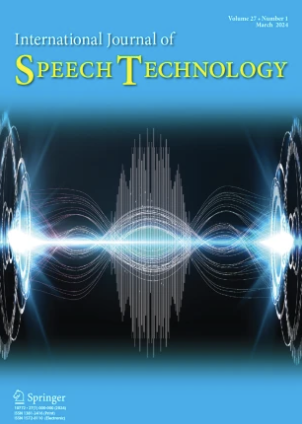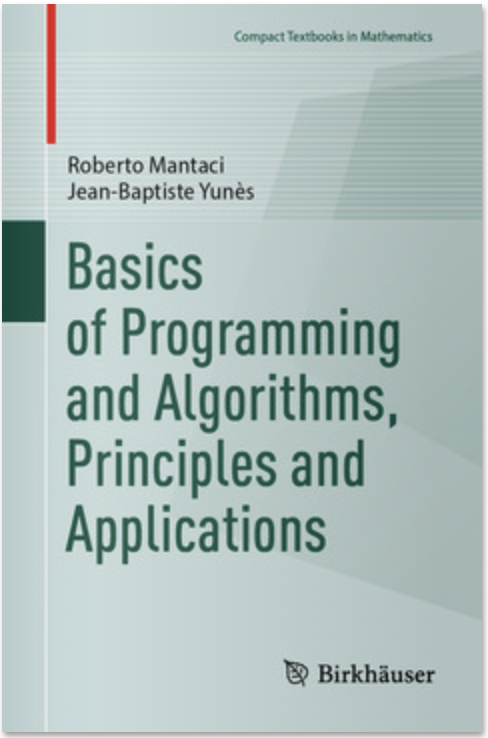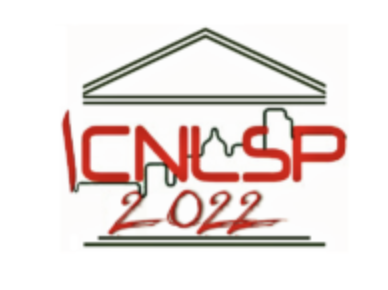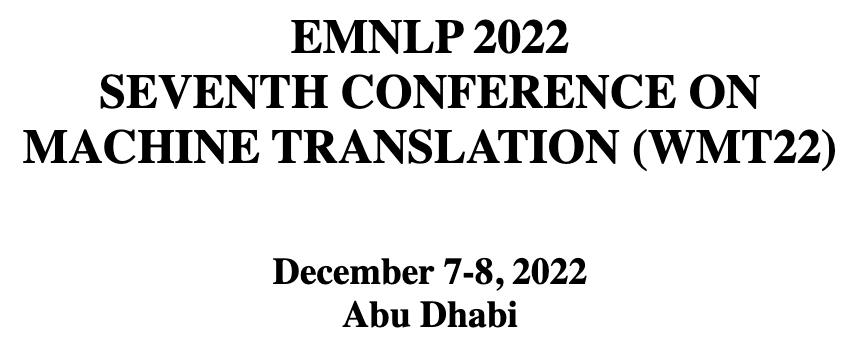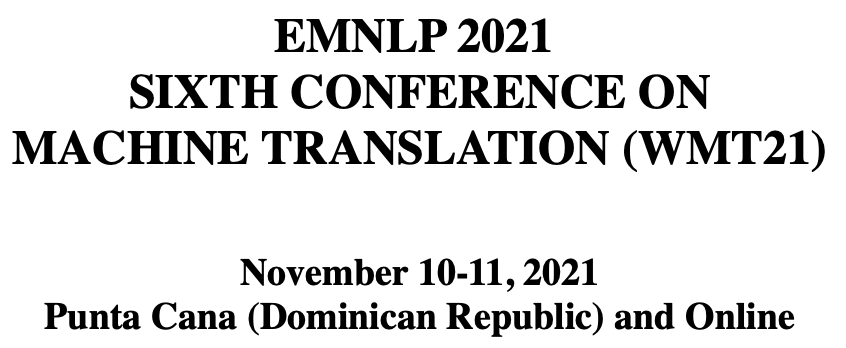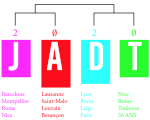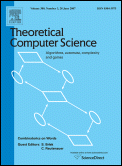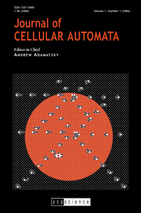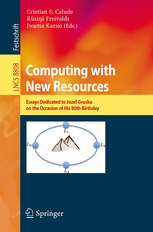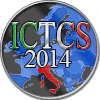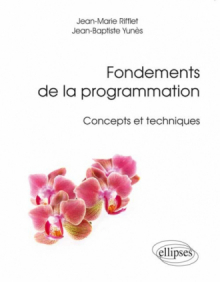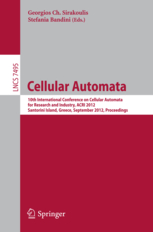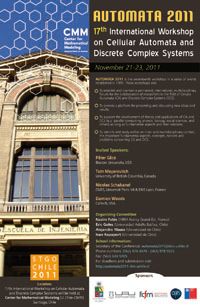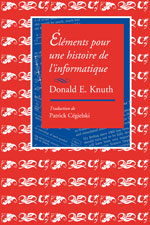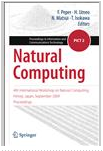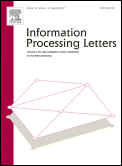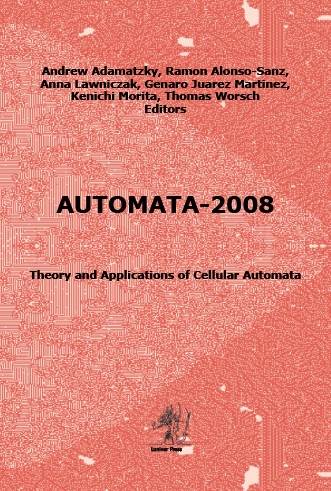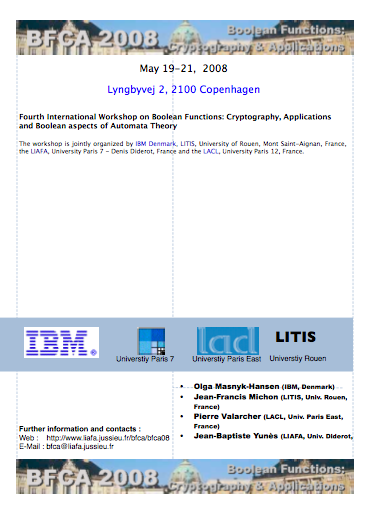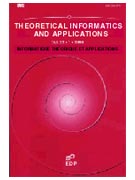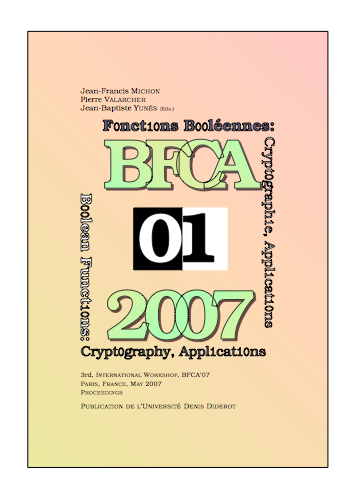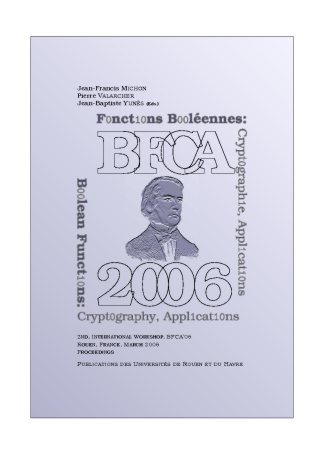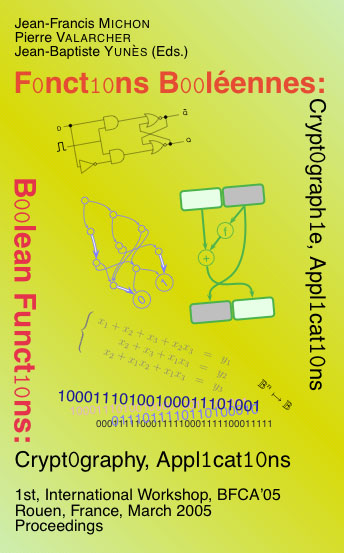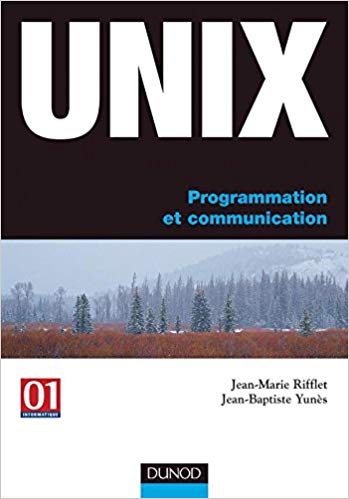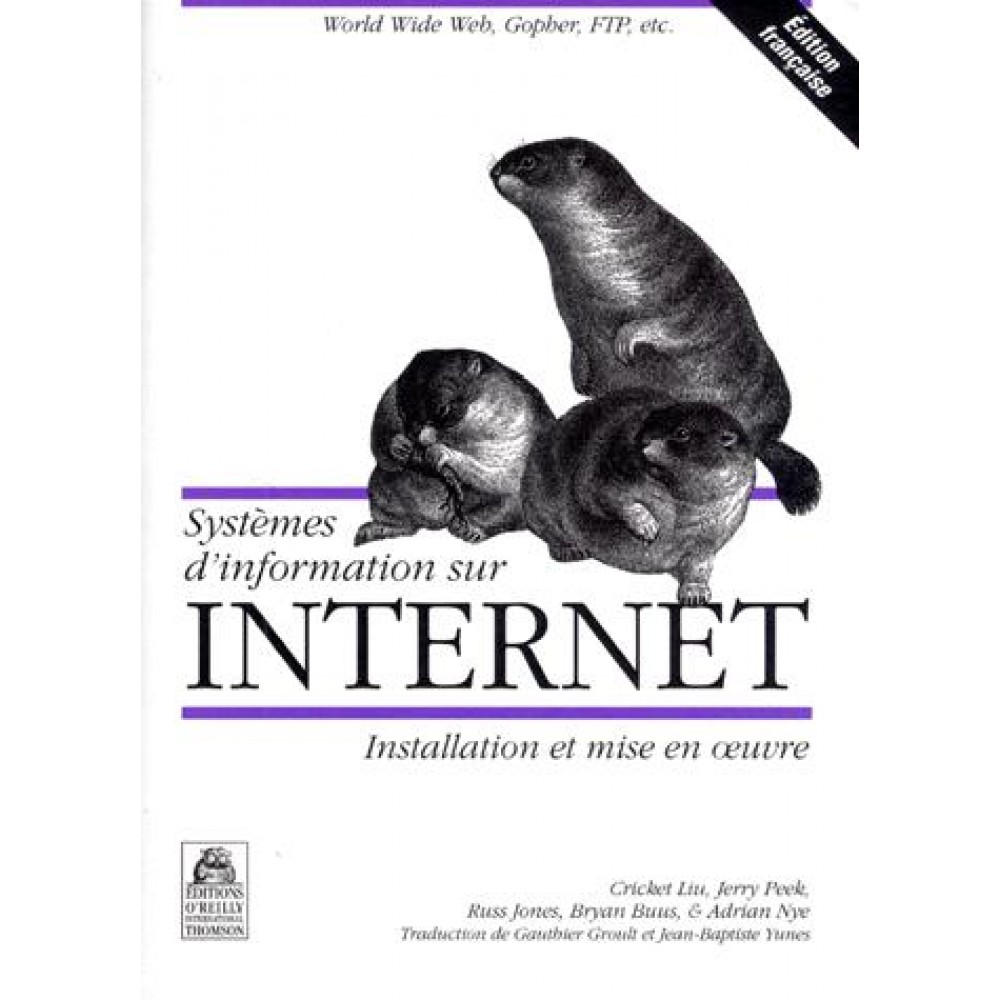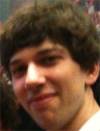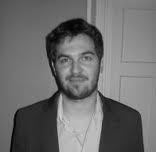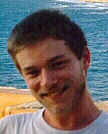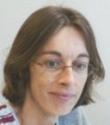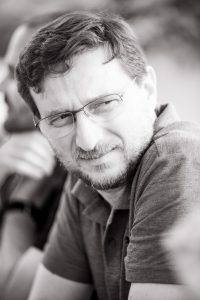My research activities usually lead to publications or communications. I also had the opportunity to supervise research activities or to be referee or member of “doctorat” juries. I sometimes (co)-organize events. Some put me in charge of important tasks for my university. Colleagues asked me to be editor, some others to participate or build projects, but there exists miscellaneous things.
Publications
2024
Whisper for L2 speech scoring Journal Article
In: Int J Speech Technol, pp. 923—934, 2024.
Probing Whisper Predictions for French, English and Persian Transcriptions Conference
ACL Anthology, 2024.
Basics of Programming and Algorithms, Principles and Applications Book
Birkhaüser Verlag, 2024, ISBN: 978-3-031-59800-5.
2023
Translating Dislocations or Parentheticals: Investigating the Role of Prosodic Boundaries for Spoken Language Translation from French into English Conference
6th International Conference on Natural Language and Speech Processing (ICNLSP 2023), Mourad Abbas, Abed Alhakim Freihat, Dec 2023, Trento (Italy), Italy, 2023.
Using Whisper LLM for Automatic Phonetic Diagnosis of L2 Speech, a Case Study with French Learners of English Proceedings Article
In: Mourad Abbas, Abed Alhakim Freihat (Ed.): Proceedings of the 6th International Conference on Natural Language and Speech Processing (ICNLSP 2023), Virtual Event, 16-17 December 2023, pp. 282–292, Association for Computational Linguistics, 2023.
Investigating Techniques for a Deeper Understanding of Neural Machine Translation (NMT) Systems through Data Filtering and Fine-tuning Strategies Proceedings Article
In: Philipp Koehn, Barry Haddon, Tom Kocmi, Christof Monz (Ed.): Proceedings of the Eighth Conference on Machine Translation, WMT 2023, Singapore, December 6-7, 2023, pp. 275–281, 2023.
2022
Toward a Test Set of Dislocations in Persian for Neural Machine Translation Proceedings Article
In: The Third International Workshop on NLP Solutions for Under Resourced Languages (NSURL 2022), 2022.
La robustesse de la traduction neuronale : les systèmes de traduction automatique neuronale à l'épreuve de la reproductibilité de l'expérience Proceedings Article
In: Journée d'étude '"Robustesse des systèmes de TAL", Paris, France, 2022.
The SPECTRANS System Description for the WMT22 Biomedical Task Proceedings Article
In: Proceedings of the Seventh Conference on Machine Translation, {WMT} 2022, Abu Dhabi, United Arab Emirates (Hybrid), December 7-8, 2022, pp. 895–900, Association for Computational Linguistics, 2022.
2021
The SPECTRANS System Description for the WMT21 Terminology Task Proceedings Article
In: Proceedings of the Sixth Conference on Machine Translation (WMT), pp. 818-825, Association for Computational Linguistics 2021.
2020
Approche textométrique des phases d'entraînement en traduction automatique neuronale (TAN) : étude de cas avec Europarl et OpenNMT Proceedings Article
In: JADT 2020 15èmes Journées Internationales d'Analyse statistique des Données Textuelles, Toulouse, France, Jun. 16-19., 2020.
RELIA, un projet interdisciplinaire d'initiation à la recherche par le TAL Proceedings Article
In: JEP - TALN - RECITAL 2020.
The learnability of the annotated input in NMT (Replicating Vanmassenhove et al. 2018 with OpenNMT) Proceedings Article
In: European Language Resources Association (Ed.): Proceedings of the 12th Language Resources and Evaluation Conference, pp. 5631–5640, 2020.
2018
Generalized FSSP on Two Triangular Tilings Proceedings Article
In: 2018 Sixth International Symposium on Computing and Networking Workshops (CANDARW), Hida Takayama, Japan, November 27-30, 2018, pp. 27–31, IEEE 2018.
Proving Formally a Field-Based FSSP Solution Technical Report
2018.
2016
Synchronizing the squad with (almost) arbitrary cut ratio Proceedings Article
In: 2016 Fourth International Symposium on Computing and Networking (CANDAR), Hiroshima, Japan, November 22-25, 2016, pp. 229–235, IEEE 2016.
A field based solution of Mazoyer’s FSSP schema Proceedings Article
In: Samira El Yacoubi, Jaroslaw Wąs, Stefania Bandini (Ed.): International Conference on Cellular Automata, ACRI 2016. Fez, Morocco, September 5-8, 2016, pp. 134–143, Springer, Cham 2016, ISBN: 978-3-319-44365-2.
Towards efficient collaborative digital pathology: a pioneer initiative of the FlexMIm project Journal Article
In: Diagnostic Pathology, vol. 1, no. 8, 2016, ISSN: 2364-4893.
An efficient algorithm for generating symmetric ice piles Journal Article
In: Theoretical Computer Science, vol. 629, pp. 96–115, 2016.
Finitization of Infinite Field-based Multi-general FSSP Solution. Journal Article
In: Journal of Cellular Automata, vol. 12, 2016, ISSN: 1557-5997.
2014
Towards better digital pathology workflows: programming libraries for high-speed sharpness assessment of Whole Slide Images Journal Article
In: The Diagnostic Digital Pathology, vol. 9, no. 1, pp. S3, 2014.
Advances on random sequence generation by uniform cellular automata Book Section
In: C. Calude C., R. Freivalds R., I. Kazuo (Ed.): Computing with New Resources. Lecture Notes in Computer Science., vol. 8808, pp. 56–70, Springer, Cham, 2014, ISBN: 978-3-319-13350-8.
An Efficient Algorithm for Generating Symmetric Ice Piles Proceedings Article
In: Stefano Bistarelli, Andrea Formisano (Ed.): 15th Italian Conference on Theoretical Computer Science, Perugia, Italy, September 17-19, 2014, pp. 15–170, 2014, ISSN: 1613-0073.
Fondements de la Programmation Concepts et Techniques Book
Ellipses, 2014, ISBN: 9782340000148.
Generalized FSSP on hexagonal tiling: Towards arbitrary regular spaces Proceedings Article
In: Teijiro Isokawa, Katsunobu Imai, Nobuyuki Matsui, Ferdinand Peper, Hiroshi Umeo (Ed.): Cellular Automata and Discrete Complex Systems. AUTOMATA 2014. Himeji, Japan, July 7th-9th, 2014. LNCS 8996. , pp. 83–96, Springer, Cham 2014, ISBN: 978-3-319-18812-6.
Automatic image quality assessment in digital pathology: from idea to implementation. Online
2014, visited: 07.04.2014.
Experimental finitization of infinite field-based generalized FSSP solution Proceedings Article
In: Jarosalw Wąs, Giorgos Sirakoulis, Stefania Bandini (Ed.): International Conference on Cellular Automata, ACRI 2014: Cellular Automata, LNCS., pp. 136–145, Springer, Cham 2014, ISBN: 978-3-319-11520-7.
2013
Moore and von Neumann neighborhood n-dimensional generalized firing squad solutions using fields Proceedings Article
In: 2013 First International Symposium on Computing and Networking, Matsuyama, Japan, 2013, pp. 552–558, IEEE 2013.
Stack or trash? Quality assessment of virtual slides Proceedings Article
In: Diagnostic Pathology: Proceedings of the 11th European Congress on Telepathology and 5th International Congress on Virtual Microscopy, pp. S23, BioMed Central 2013.
2012
À prendre ou à laisser? Une évaluation automatique de la qualité des lames virtuelles en temps quasi-réel Proceedings Article
In: Annales de Pathologie, pp. S151–S152, Elsevier Masson 2012.
Computations on cellular automata Book Chapter
In: Grzegorz Rozenberg (Ed.): Handbook of Natural Computing, pp. 159–188, Springer Berlin Heidelberg, 2012, ISBN: 978-3-540-92911-6.
Recursivity in Field-based Programming: the Firing Squad Example. Proceedings Article
In: Workshop on Spatial Computing International Conference on Autonomous Agents and MultiAgent Systems, Valencia, Spain, 2012.
A spatio-temporal algorithmic point of view on firing squad synchronisation problem Proceedings Article
In: Georgios Sirakoulis, Stefania Bandini (Ed.): International Conference on Cellular Automata, Cellular Automata. ACRI 2012, Santorini Island, Greece. Lecture Notes in Computer Science, LNCS., pp. 101–110, Springer, Berlin, Heidelberg 2012, ISBN: 978-3-642-33350-7.
Grids and universal computations on one-dimensional cellular automata Journal Article
In: Natural Computing, vol. 11, no. 2, pp. 303–309, 2012.
2011
On 1-resilient, radius 2 elementary CA rules Proceedings Article
In: Nazim Fatès, Eric Goles, Alejandro Maass, Ivan Rapaport (Ed.): AUTOMATA 2011, 17th International Workshop on Cellular Automata and Discrete Complex Systems, Nancy, France., pp. 41–54, 2011.
Cellular automata, Boolean functions, Pseudo-random generators, Symmetric cryptography. Proceedings Article
In: Nazim Fatès, Eric Goles, Alejandro Maass, Ivan Rappaport (Ed.): AUTOMATA 11, 17th International Workshop on Cellular Automata and Discrete Complex Systems, November 21—23, 2011, Santiago, Chile., 2011.
Le premier programme informatique de von Neumann Book Chapter
In: Éléments pour une histoire de l'informatique. Traduction d'œuvres choisies de Donald E. Knuth. Traduction dirigée par Patrick Cégielski., pp. 56–75, Société Mathématique de France-CSLI Publications, Stanford, California, 2011, ISBN: 978-1-57586-622-2.
2010
Achieving universal computations on one-dimensional cellular automata (invited conference) Proceedings Article
In: Hiroshi Umeo, Stefania Bandini (Ed.): Cellular Automata. ACRI 2010. Ascoli Piceno, Italy, Septembre 21-24, 2010. Lecture Notes in Computer Science, LNCS, pp. 660–669, Springer, Berlin, Heidelberg 2010, ISBN: 978-3-642-15979-4.
A Note on Synchronization Steps in Firing Squad Synchronization Problem Proceedings Article
In: 2010 Third International Joint Conference on Computational Science and Optimization, Huangshan, China., pp. 300–301, IEEE 2010, ISBN: 978-1-4244-6812-6.
2009
Small non optimum time firing squad synchronization protocols for one-dimensional rings Proceedings Article
In: International Symposium on Nonlinear Theory and its Applications (NOLTA'09). Sapporo, Japan, October 18—21, 2009., pp. 479–482, 2009.
A simple optimum-time firing squad synchronization algorithm for two-dimensional rectangle arrays Proceedings Article
In: 2009 International Conference on Computational Intelligence, Modelling and Simulation, Brno, Czech Republic, September 7—9, 2009., pp. 120–125, IEEE 2009.
A Two-Dimensional Optimum-Time Firing Squad Synchronization Algorithm and Its Implementation Book Section
In: Ferdinand Peper, Hiroshi Umeo, N. Matsui, Teijiro Isokawa (Ed.): IWNC'09 — International Workshop on Natural Computing, Himeji, Japan, September 23—25, 2009, Proceedings in Information and Communications Technology., vol. 2, no. 3, pp. 342–351, Springer, Tokyo, 2009.
A family of smallest symmetrical four-state firing squad synchronization protocols for ring arrays Journal Article
In: Parallel Processing Letters, vol. 19, no. 02, pp. 299–313, 2009.
Known CA synchronizers made insensitive to the initial state of the initiator Journal Article
In: Journal of Cellular Automata, vol. 4, no. 2, pp. 147–158, 2009.
2008
About 4-states solutions to the firing squad synchronization problem Proceedings Article
In: Hiroshi Umeo, Shin Morishita, Katsuhiro Nishinari, Toshihiko Komatsuzaki, Stefania Bandini (Ed.): Cellular Automata, 8th International Conference on Cellular Automata for Research and Industry, ACRI 2008, Yokohama, Japan, September 23—26, 2008. Proceedings. Lecture Notes on Computer Science, LNCS, pp. 108–113, Springer, Berlin, Heidelberg 2008, ISBN: 978-3-540-79992-4.
A 4-states algebraic solution to linear cellular automata synchronization Journal Article
In: Information Processing Letters, vol. 107, no. 2, pp. 71–75, 2008.
A family of smallest symmetrical four-state firing squad synchronization protocols for one-dimensional ring cellular automata Journal Article
In: pp. 174–185, 2008, ISBN: 978-1-905986-16-5.
Goto's construction and Pascal's triangle: new insights into cellular automata synchronization Proceedings Article
In: Proceedings of the first symposium on cellular automata, "Journées Automates Cellulaires", JAC 2008, Uzès, France, 2008, pp. 195–203, Издательство МЦНМО 2008, ISBN: 978-5-94057-377-7.
An intrinsically non minimal-time Minsky-like 6-states solution to the firing squad synchronization problem Journal Article
In: RAIRO - Theoretical Informatics and Applications, vol. 42, no. 1, pp. 55–68, 2008.
2007
Automates Cellulaires; Fonctions Booléennes. Mémoire d'Habilitation à Diriger des Recherches PhD Thesis
Université Paris Diderot, 2007.
Simple new algorithm which solve the FSSP: a 4n-steps 7-states solution Proceedings Article
In: International Conference on Machines, Computations, and Universality. MCU 2007: Machines, Computations, and Universality. Université d'Orléans, France, September 10—13, 2007., pp. 316–324, Springer, Berlin, Heidelberg., 2007, ISBN: 978-3-540-74593-8.
New extensions to some firing squad synchronization solutions Proceedings Article
In: AUTOMATA 2007. 13th International Workshop on Cellular Automata, Fields Institute, Toronto, Canada, August 27—29, 2007. IFIP TC1 WG 1.5., 2007.
Revisiting existing solutions to the firing squad synchronization problem Proceedings Article
In: WSDC'07, Workshop on Symbolic Dynamic and Coding. Institut Gaspard Monge, Marne-la-Vallée, France, July 2—4, 2007., 2007.
2006
Presses Universitaires de Rouen et du Havre, 2006, ISBN: 978-2-87775-422-4.
Fault Tolerant Solutions to the Firing Squad Synchronization Problem in Linear Cellular Automata. Journal Article
In: J. Cellular Automata, vol. 1, no. 3, pp. 253–268, 2006.
2005
On maximal QROBDD's of Boolean functions Journal Article
In: RAIRO - Theoretical Informatics and Applications, vol. 39, no. 4, pp. 677–686, 2005.
Presses Universitaires de Rouen et du Havre, 2005, ISBN: 2-87775-403-0.
2004
HFE and BDDs: A practical attempt at cryptanalysis Book Section
In: K.Q. Feng, H. Niederreiter, C.P. Xing (Ed.): Proceedings of CCC'03, Coding, Cryptography and Combinatorics. Progress in Computer Science and Applied Logic., pp. 237–246, Birkhäuser, Basel, 2004, ISBN: 978-3-7643-2429-5.
A100344, Sequence of Enumeration of QROBDD Journal Article
In: The Online Encyclopedia of Integer Sequences, 2004.
2003
Unix: Programmation et Communication Book
Dunod, 2003, ISBN: 978-2100079667.
2002
Attaque du système HFE par BDD Technical Report
2002.
1999
An Implementation of a Fault Tolerant Scheme of the FSSP Proceedings Article
In: Automata 1999, IFIP WG1.5 Meeting, École Normale Supérieure de Lyon, Lyon, France., 1999.
1997
O'Reilly, 1997, ISBN: 2-84177-015-X.
1996
Systèmes d’information sur Internet: Installation et mise en oeuvre Book
O'Reilly, 1996, ISBN: 2-84177-013-3.
1995
Solutions Tolérantes aux pannes pour le problème de la synchronisation d'une ligne de fusiliers. Proceedings Article
In: ASMICS Workshop, Roanne, France., 1995.
Fault tolerant solutions to the firing squad synchronization problem Proceedings Article
In: Jozef Gruska, Hiroshi Umeo, Roland Vollmar (Ed.): Dagstuhl Seminar Report. Automata 1995, Schloss Dagstuhl 9510, Dagstuhl, Germany., pp. 28, Dagstuhl 1995.
Advising
2013
Intégration des lames virtuelles dans le dossier patient électronique PhD Thesis
LIAFA, Université Paris Diderot, 2013.
Referees
2021
Joint source-cryptographic-channel coding for real-time secure voice communications on voice channels PhD Thesis
Université Côte-d'Azur, 2021.
2018
Discrétisation automatique de machines à signaux en automates cellulaires. PhD Thesis
LIFO, Université d'Orléans, 2018.
2013
Modèle géométrique de calcul : fractales et barrières de complexité PhD Thesis
LIFO, Université d'Orléans, 2013.
2012
La conjuration des égos. Réseaux, algorithmes, identités PhD Thesis
LIAFA, Université Paris Diderot, 2012.
2011
Reconnaissance de langages par automates cellulaires PhD Thesis
GREYC, Université de Caen, 2011.
2010
Algorithmique distribuée pour la programmation des milieux de calcul PhD Thesis
LRI, Université Paris 11, 2010.
2005
Méthodes et outils pour la production de systèmes d'exploitation : application à ChorusOS PhD Thesis
LIAFA, Université Paris Diderot, 2005.
2002
Propriétés structurelles de certaines fonctions Booléeennes PhD Thesis
LIAFA, Université Paris Diderot, 2002.
Events
Conferences, meetings and alike
- 2015. Journées ANR TARMAC and Spatial Computing
Fred Gruau, Luidnel Maignan, Jean-Baptiste Yunès. - 2011. Workshop on Sand Pile Model. April 7—8, 2011,
LIAFA, Paris, France.
Roberto Mantaci, Paulo Massazza, Jean-Baptiste Yunès - 2008. Rencontre: programmation sur automates cellulaires.
LIAFA, Paris, France. 6 Juin 2008.
Éric Thierry, Jean-Baptiste Yunès - 2008. BFCA’08 — Boolean Functions: Cryptography and Applications. May 19—21, 2008, Copenhagen, Denmark.
Olga Masnyk-Hansen, Jean-Francis Michon, Pierre Valarcher, Jean-Baptiste Yunès - 2008. Journée en l’honneur de Serge Grigorieff,
LIAFA, Paris, France. 15 Janvier 2008.
Patrick Cégielski, Christian Choffrut, Loïc Colson, Pierre Valarcher, Jean-Baptiste Yunès - 2007. BFCA’07, Boolean Functions: Cryptography and Applications. LIAFA, Université Paris Diderot, Paris, France. May 2—3, 2007.
Jean-Francis Michon, Pierre Valarcher, Jean-Baptiste Yunès - 2006. BFCA’06, Boolean Functions: Cryptography and Applications.
Université de Rouen, March 13—15, 2006.
Jean Francis Michon, Pierre Valarcher, Jean-Baptiste Yunès - 2005. BFCA’05, Boolean Functions: Cryptography and Applications.
Université de Rouen, March 7—8, 2005.
Jean Francis Michon, Pierre Valarcher, Jean-Baptiste Yunès
Contest
2009— : Co-organizer of Journées Francilliennes de Programmation.
Programming contest for first years students. Co-organized with colleagues from Paris-Sud, Pierre et Marie Curie, Paris Diderot.
Charges
- 2008—2010 : In charge of IT for Education mission for my University.
- Edition of booklets for new students to initiate them to our digital world
- Mobile computer loaning
- Digital equipments for teaching rooms
- Recording equipments
- Video library
- Digital rooms
Editor
I am currently member of the editorial board for Journal of Celllular Automata.
Projects
I’ve been involved into several different project through time. In french :
- 2019—2020 : Apprendre par la bande. Appel à Projet « Émergence en Recherche – Initiatives Interdisciplinaires » 2019—2020 de l’Université de Paris. Informatique/Sociologie. Idex 2019.
Olivier Martin (porteur), CERLIS, Campus Descartes
Jean-Baptiste Yunès, UFR d’Informatique Paris Diderot. - 2019 : RELIA – Recherche En Licence Informatique et études Anglophones
IREEL : Initiation à la REcherche En Licence. Appel IDEX 2019. Université de Paris ANR-18-IDEX-0001.
Jean-Baptiste Yunès, UFR d’Informatique
Nicolas Ballier, UFR d’Études Anglophones Paris Diderot.
Github, web - 2014 : 2027 – la salle interactive
AAP Pédagogies Innovantes – USPC Université Sorbonne Paris Cité – 2014.
Jean-Baptiste Yunès (conception), François Laroussinie (pilotage)
Présentation le 9 Juin 2016 dans le cadre de la journée «pédagogie innovante» organisée par l’USPC.
Vidéo, vidéo, FLEXSpace, web - 2012—2017 : ANR TARMAC : Theory of AlgoRithm, Machines, completeness, Axiomatization and physical Constraints.
ANR-12-BS02-0007.
Jean-Baptiste Yunès (Task #2 – leader, LIAFA team – team leader)
Web - 2012—2015 : FUI FlexMIM : Plate-forme de partage et gestion d’images médicales de grandes dimensions permettant le télédiagnostic.
14ième appel à projet FUI (Fonds Unique Interministériel), 2012-2015. Projet labellisé par Medicen et Systematic.
David Ameisen, Philippe Bertheau, Jean-Baptiste Yunès (WP3, WP4) - 2012—2013 : IFADEM/OIF/AUF/UNESCO
- 2013. MINES-DGESIP Ministère de l’Enseignement Supérieur et de la Recherche
Rachid El Boussarghini, Vincenzo Musco, Patrick Pollet, Jean-Baptiste Yunès.
“Développement de services orientés enseignant pour une application dédiée au C2I (Certificat Informatique et Internet) basée sur les technologies HTML5.” - 2013. IFADEM (OIF – AUF)
Vincent Bellenger, Papa Youga Dieng, Rachid El Boussarghini, Baptiste Fontaine, Jean-Baptiste Yunès.
“Développement d’une application de mise à disposition de ressources pédagogiques sur terminaux mobiles pour enseignants IFADEM.”
Travail ayant donné lieu à une communication à l’UNESCO de Papa Youga Dieng (coordinateur IFADEM). - 2012. MINES-DGESIP Ministère de l’Enseignement Supérieur et de la Recherche
Rachid El Boussarghini, Thierry Koscielniak, François Lankar, Vincenzo Musco, Patrick Pollet, Jean-Baptiste Yunès.
“Développement d’une application dédiée au C2I (Certificat Informatique et Internet) basée sur les technologies HTML5.”
- 2013. MINES-DGESIP Ministère de l’Enseignement Supérieur et de la Recherche
- 2011 : Robothétie. Appel à projets pédagogiques émergents du PRES Sorbonne Paris Cité, 2011. Projet Inter-établissement
Yann Régis-Gianas, Jean-Baptiste Yunès (porteurs Université Paris Diderot). - 2002—2006 : Membre ACI Cryptologie
- 1994—2000? : Membre ACI ??
Misc
Actually not in any correct order :
2011. Invited professor.
École de combinatoire et algorithmique de Madagascar, Université d’Antananarivo, École Supérieure Polytechnique d’Antananarivo, Madagascar. September 5-16, 2011. Jean-Baptiste Yunès. “Cours d’informatique.” D.E.A. de mathématiques.
1999. Cryptanalysis. Unpublished.
Gilles Brochier, Chris Card, Jonathan Vaugh, Jean-Baptiste Yunès (aka The Brute Squad). Experiments on “Singh’s Cipher Challenge Essays”. Stages 1-9 cracked on time. Read the story.

 https://orcid.org/0000-0003-0291-4263
https://orcid.org/0000-0003-0291-4263